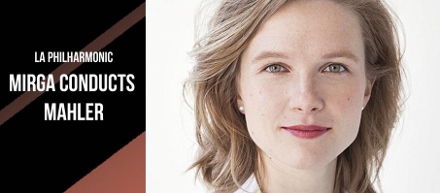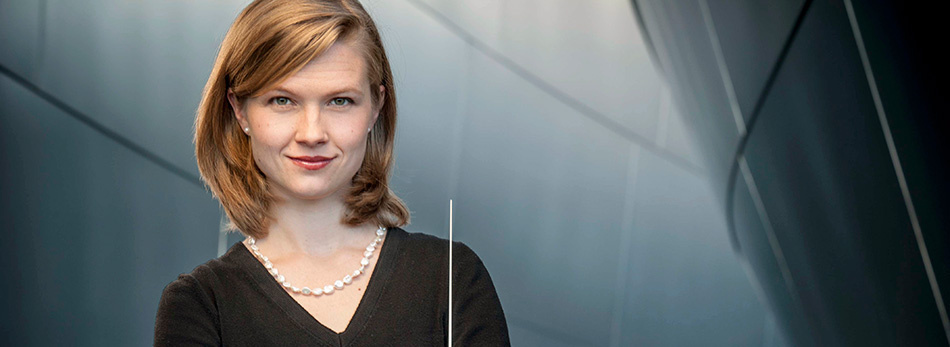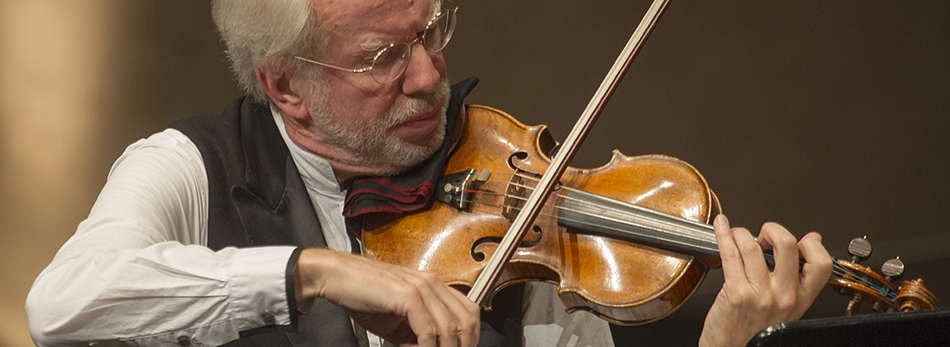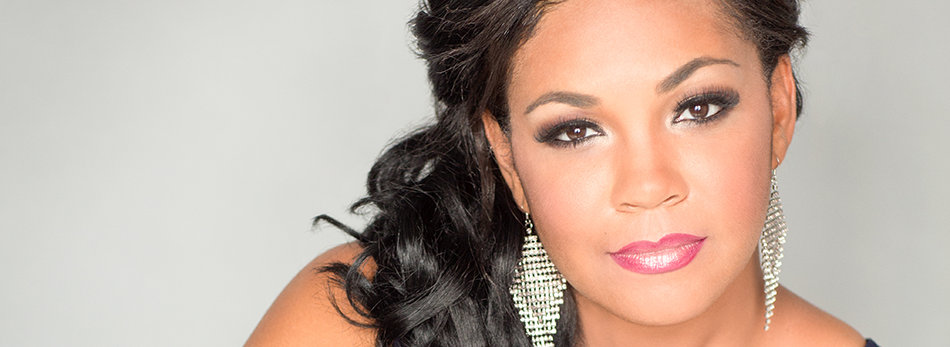INACCESSIBLE?
MIRGA MAKES US THINK AGAIN
The three composers that make up LA Phil’s current program—which opened last night and plays through Saturday—are not what one would call “accessible,” meaning easy to listen to for some folks. Laypersons will often find themselves searching for lyrical, easy-to-digest melodies, or possibly an introduction of a theme or leitmotif that is built upon in variations. For the European stew on hand: Olivier Messiaen (French), MieczysÅ‚aw Weinberg (Polish) and, to a lesser extent, Gustav Mahler (Austrian), listeners often don’t know how to listen. Just when a lovely or interesting phrase or orchestration pulls you in, the mood shifts—sometimes violently—and exasperation sets in. Many don’t know where to begin, trying in vain to “get” why these composers are even in the repertoire (again less so with Mahler). Even if a scholar elucidates with something like, “notice the fascinating contrary motion of chords,” one may hesitate to plop down hard-earned money for such a concert.
And that may be partially the reason that the first of three concerts at Disney Hall had enough empty seats for patrons to move down from the balcony to the terrace. Well, forget everything you know (or what you didn’t know!), as these beautiful selections are some of the most easily digestible pieces from these masters. The underattendence on Thursday may also be due to Mirga GražinytÄ—-Tyla not being a draw (like Dudamel), but aside from being a joy to watch, this exciting leader—who was Associate Conductor for LA Phil’s 2016/2017 season—handily proved why this is the program for anyone skittish to otherwise give these composers a try. I firmly believe that if you find these prodigious writers approachable upon first hearing them, you are much more likely to give them another shot. as repeated listenings will make them more and more fascinating.
Still considered avant-garde, Messiaen (1908-1992) was an organist, theorist, poet, POW, teacher, theologian, and ornithologist. Many of his bird pieces offer hoots and whistles through a prism of ecstatic dissonance. The 1989 work at hand, written to commemorate the 1991 bicentenary of Mozart’s death, has exotic birdsong played by brass, woodwinds, and the “xylos” (which includes the chimes, suspended cymbal, and xylorimba [with a range of five octaves], played by James Babor, Perry Dreiman, and Principal Matthew Howard).
Often Messiaen just dresses up standard gorgeous harmony beyond recognition, but the foundation of tonality in his ten-minute Un sourire (A Smile) keeps the audience anchored. It’s an intimate, delicate piece that—given the many players on stage—isn’t orchestrated for a full sound. It begins soft, beautiful and mystical. Then suddenly a chipper xylophone chirps in an opinion, then right back to a contemplative mood, like the dawning of a new day. Then a burst. Then back to a somber meditative flavor, ending up deliriously languid. Messiaen noted that Mozart, for all his suffering, never stopped smiling, and that this was evident in his music. But this gorgeousness is mostly dreamy and ethereal, peaceful even, and had nothing I could hear that has anything to do with Mozart’s writing. Or smiling. It did, however, leave me with a smile.
I overheard four separate parties who said they never even heard of Weinberg (1919–1996), yet he was an extremely prolific author, with 26 symphonies, 7 operas, 17 string quartets and much more in a catalog of over 150 works (this is LA Phil’s first time with the Violin Concerto). But the Soviet-era composer didn’t fall into obscurity because of his oeuvre; the 20 or so pieces I’ve heard are fascinating. He was a Soviet-era Polish Jew, so the Soviets no doubt saw little reason to branch his music to the West; more important, he didn’t promote himself. Largely unknown outside of Russia until the last decade or so, his music is going through a Renaissance, due to players like the ever-adventurous 70-year-old Gidon Kremer, who has been championing his works in concert halls and on recordings for the past decade.
And it was the great violinist himself who appeared alongside a confident, modest Mirga. With the score in front of the Latvian, his playing was sweet and sharp, but almost folksy. Know that the Violin Concerto does not require dazzling melodrama and showmanship from the soloist, but probing, private expression (which comes unexpectedly after that opening climax). So if Kremer sounds like the brilliant village fiddler more than a concert hall virtuoso, that’s intentional. At times, he even sounded a little scratchy, his bow bounced off the strings, and he would waver in place of a strong vibrato. While his instincts are right on, I still prefer more strength with the passion. For the encore, however, he did attack with brutal emotion Weinberg’s Cello Prelude op.100 No.5 (there are 24 total).
The four movements aren’t easily pigeonholed—“modern” is too unspecific, and Shostakovichian is unfair. The first movement is pocked with tension, ever-building from the the incredibly fierce string section (the beefy bass section, led by Christopher Hanulik, groaned and growled and resonated all night—I want what they’re having). Parts of the second movement are sparse and very relaxing, gentle and elegant. The third moves like steady, soft ripples on water. The finale, an Allegro, starts with a militaristic march—aided by Jeffrey Grant’s exciting timpani—and ends with a warm lingering major chord. This is the kind of accessibility that eludes most new music.
The Fourth is Mahler’s shortest symphony (at almost one hour!) and the one with the sweetest and most radiant and melodic qualities. Fans of the Symphony No. 4 in G major will be elated at Mirga’s cheerful performance, and newcomers should breathe a sigh of relief for the light tone and joyous essence of the score. Both will love Mirga’s youthful energy (she’s only 30) and charmed sweetness. The playful mood was exemplified when Mirga called out Andrew Lowy’s clarinet in the first movement and he responded heartily, literally lifting it to the rafters. Also in the Bedächtig—an atmospheric wintery display complete with jingle bells that could have been the backdrop for parts of David Lean’s Doctor Zhivago—concertmaster Martin Chalifour showered us with the strength that Kremer lacked; likewise Andrew Bain, who proved time and again why he is the best horn player in the orchestra. His call and response with Marion Arthur Kuszyk’s oboe was paradise the third movement.
The second movement highlighted both the acoustics and Lou Anne Neill’s harp, an instrument so often drowned out in symphonies. It may have helped that Neill was situated center stage, right next to Janai Brugger (pictured above), whose rich, creamy soprano in the fourth movement knocked me out (I still remember Brugger as Pamina in LA Opera’s animated Magic Flute). The adagio was a bit too adagio, but Mirga—dancing and swaying—created an absolutely transportive evening. Get hugged by Mahler this weekend.
photos courtesy of LA Phil
Los Angeles Philharmonic
Mirga Conducts Mahler
Mirga Gražinytė-Tylal, conductor
ends on October 21, 2017
for tickets, call 323.850.2000 or visit LA Phil




